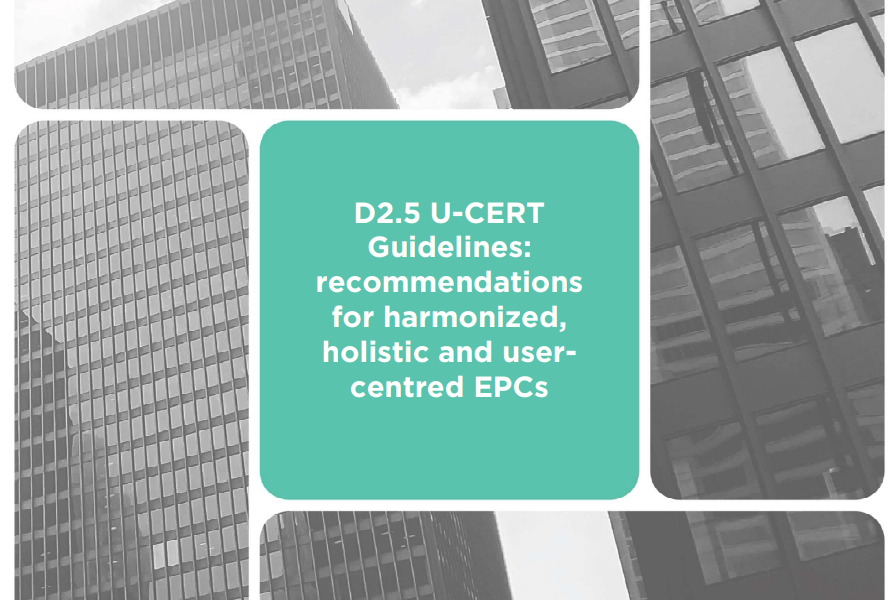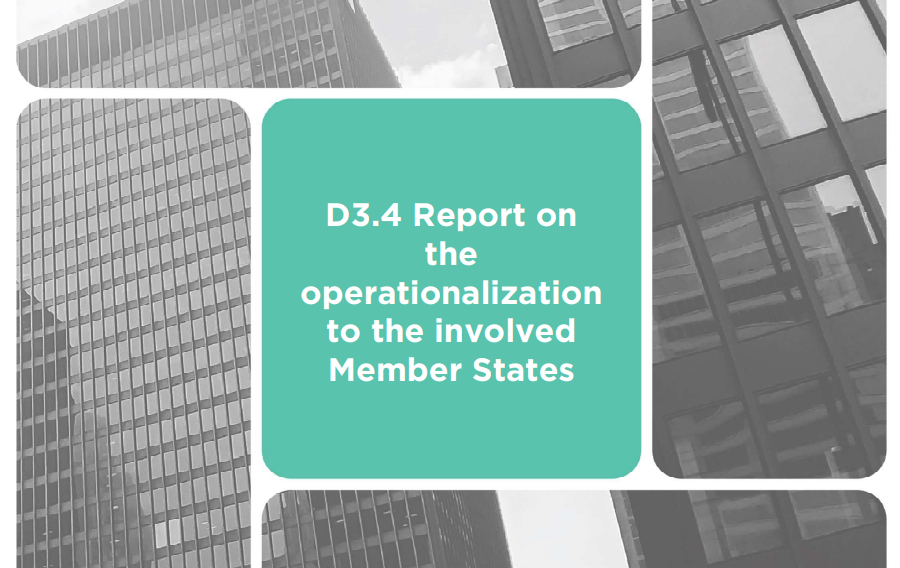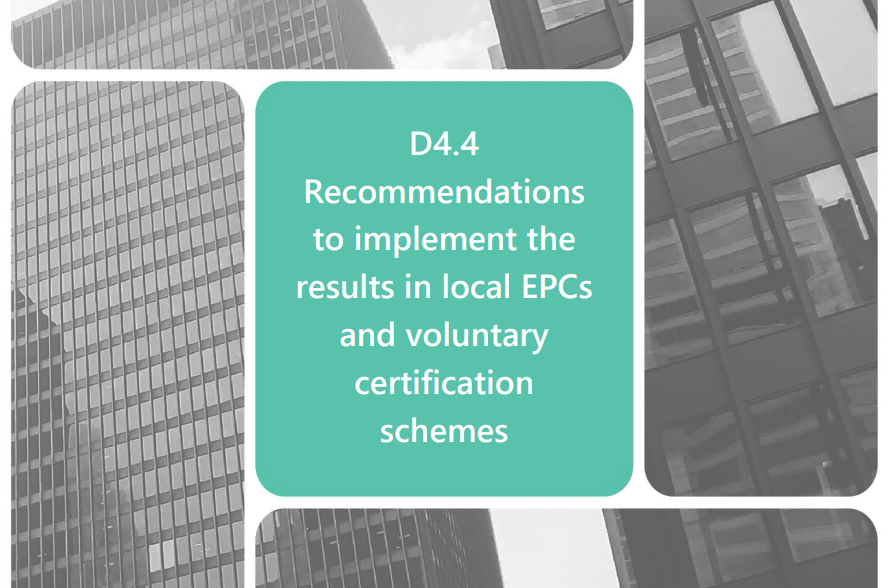



EPCs recommendations
🧵
U-CERT project experts’ opinion on an EU-wide software kernel: The needs of building professionals to make the EU’s green and digital energy transition transparent, technology-neutral and effective by developing an EU calculation engine 196.6 KBIn addition to the 2 cross-cutting documents prepared for the last phase of the EPBD revision included here above, U-CERT team has carefully prepared 3 interrelated and interlinked documents, included here below (D2.5, D3.4 & D4.4), containing recommendations for the evolution of building performance assessment and certification processes most notably in EU's Member States and overall European countries, but also in any country around the world implementing building performance policies.
D2.5 U-CERT Guidelines: recommendations for harmonized, holistic and user-centred EPCs 1.5 MBThis document is focused on providing recommendations to the national and regional EPBD implementing authorities in the Member States with regards to improving the EPB Certification Schemes. The U-CERT project has analysed 11 countries’ EPCs in terms of content, indicators used, and visual design. In addition, leveraging a multidisciplinary team of building professional experts (i.e., REHVA’s network), the project has put forward a comprehensive set of holistic indicators covering complementary-to-energy dimensions, such as smartness, Indoor Environmental Quality (IEQ), and cost. The technical proposal of new indicators has been carefully aligned with the outcomes from the ethnographic analysis on user perception regarding EPCs in the involved countries. Furthermore, the project has produced a template for next-generation Energy Performance Certificates (EPCs) compliant with the latest developments in EU policy (i.e., the upcoming EPBD Recast). Therefore, the project counts on a proposal for a harmonised, holistic and user centred EPB Certification Scheme. Next, a series of recommendations aiming to bring the national EPC schemes closer to it will be put forward. The remainder of the document is structured as follows
- Section 3 briefly outlines the current status regarding national EPC implementation.
- Section 4 provides recommendations and guidelines to improve the existing paradigm.
- Section 5 proposes some relevant policy recommendations.
This document is focused on providing recommendations to the national and regional EPBD implementing authorities in the Member States with regards to improving the EPB Assessment
methodology. The U-CERT project has analysed 11 countries’ EN ISO 52000-1 choices. In addition, the project has analysed Spain’s and Italy’s National Annexes in detail. Furthermore, the project has produced a converged set of National Datasheets for the main EPB Standards, and a set of user-centred and effective overall and partial indicators. Therefore, the project counts on a proposal for a harmonised EPB Assessment methodology. Next, a series of considerations aiming to the operationalisation of the EPB Standards to the
Member States will be put forward. The remainder of the document is structured as follows:
- Section 3 briefly illustrates the current situation regarding EPB Standards’ implementation.
- Section 4 poses the strategy towards national operationalisation to EU’s Member States.
- Section 5 presents some policy recommendations.
- Section 6 points to improvements regarding future work.
This document aims at providing recommendations to improve userf-riendliness, reliability, quality, and cost effectiveness of EPB Assessments and Certification schemes. In short, the objective is to foster the uptake of U-CERT’s related value propositions. This is, U-CERT’s calculation methodology for converged EPB Assessments, ensuring alignment with the set of EPB Standards. Also, U-CERT’s proposal of user-centric and effective indicators, and the design of a new flexible EPC report. U-CERT has performed a detailed characterisation of the national context in relation to EPB Assessments and Certification schemes in 11 countries involved as Case Studies. From a policy and technical perspective, a detailed mapping of local EPCs was performed, however not all National Annexes could be retrieved. Also, a social characterisation was performed through the ethnographic analysis of users’ perception with regards to EPCs in each context. Prior U-CERT demonstration and transference tasks dealt with testing the applicability of U-CERT’s value propositions in each context, a thorough analysis was produced. Thus, the project is in a reasonable position to offer meaningful insights to enhance the quality and user-friendliness of national EPB Assessments and Certification schemes. U-CERT’s recommendations have been fine-tunned to ensure alignment with the provisions outlined by the latest EPBD revision. Moreover, leveraging U-CERT’s modular structure – U-CERT’s calculation methodology follows EPB Standards’ Annex A organisation, and U-CERT’s proposed indicators are divided into categories –, the project also aims to influence voluntary certification schemes.
This document contains the recommendations to support the adaptation of national EPB Assessments and Certification schemes towards U-CERT’s value propositions. The detail in the recommendations, is different among the partner countries. The main source of difference is the availability of National Annexes – only made available for Spain and Italy - , which constitute the most detailed source of information with regards to national EPB Assessments. Thus, although general recommendations are given to every country, U-CERT’s ambition was to provide as much detail to all contexts as for Spain and Italy. Modular elements within U-CERT are also selected and recommended to be implemented in Voluntary Certification Schemes.